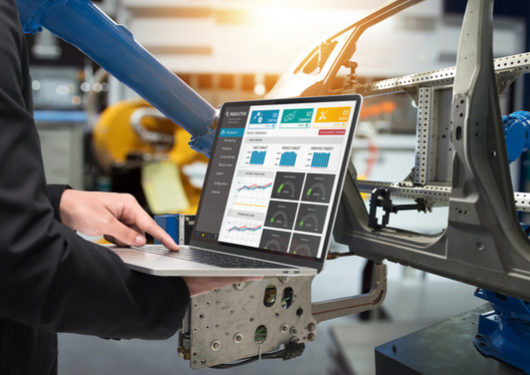
Visit Our Sponsors |
|
|
|
|
|
|
|
|
|
|
|
|
|
|
|
|
|
|
|
|
|
|
|
|
|
|
|
|
|
|
|
|
|
|
|
|
|
|

Research into the "industrial" application of the Internet of Things finds unequivocally that IIoT is transforming supply chains. Most of the implementations have been by early adopters trying to get an advantage over their competitors. Projects have a number of different objectives, but typically fall into: more efficient operations; improved customer experience; or new revenue opportunities. -Dan Roberts, Senior Consultant, Cambashi Limited
Research shows that projects are not restricted to manufacturing operations. Examples of how companies are transforming their supply chains are:
More efficient operations. In retail, Industrial IoT is helping deliver every supply chain manager’s dream of visibility and food security. Companies like Walmart, working with IBM, are taking the opportunity to integrate “blockchain” technology for distributed ledgers to ensure tracking and food security throughout the supply network. This is a project that spans the supply chain, with a number of food producers - Dole, Nestlé and Unilever – and other retailers joining together to improve food traceability.
Improved customer experience. Elekta, a Swedish manufacturer of medical technologies for treating cancer and brain disorders, uses connectivity and smart device technology to help differentiate their service business and expedite the way their products are being serviced. Elekta partnered with PTC and GE Digital-owned ServiceMax to implement Connected Field Service. In the first year of the project, Elekta carried out more than 600 preventative actions, which translated to uninterrupted treatments for more than 14,000 patients.
New revenue opportunities. Rolls-Royce is using Industrial IoT to change its role within the supply chain. The company’s TotalCare services provide a “power by the hour” model, where customers pay based on engine flying hours. The responsibility for engine reliability and maintenance rests with Rolls-Royce, which analyses engine data to manage engine maintenance and maximize aircraft availability. So, instead of being a parts supplier to the engine manufacturer, it becomes a service supplier to the airline.
In the next few years, companies will need to start implementing their own Industrial IoT projects. Companies that wait any longer run the risk of being disrupted by those that get ahead. Laggards will fall behind in price, as competitors feed operational cost savings into lower prices. They will fall behind in customer service, as businesses begin to expect the kinds of additional services offered by the early adopters. Laggards may even end up selling things that are now essentially obsolete – for example if they’re selling aero engines, when customers really want “power by the hour.”
The vendors selling IoT-enabled products or services will need to solve the security question. Security needs to be designed-in at every level, from microprocessor manufacturers such as ARM and Intel to the IoT platform providers like GE Digital, Microsoft and AWS.
The Outlook
By 2020, we expect that the plethora of Industrial IoT products and services will have consolidated and the pricing models will be simpler and well established. Customers will expect their suppliers to be tracking their products through sensors, as standard solutions replace special projects. Beyond 2020, we expect supply chains to be transformed by the digital projects of their participants. That means greater transparency and traceability, with improved customer experience and lower costs.
RELATED CONTENT
RELATED VIDEOS
Timely, incisive articles delivered directly to your inbox.

